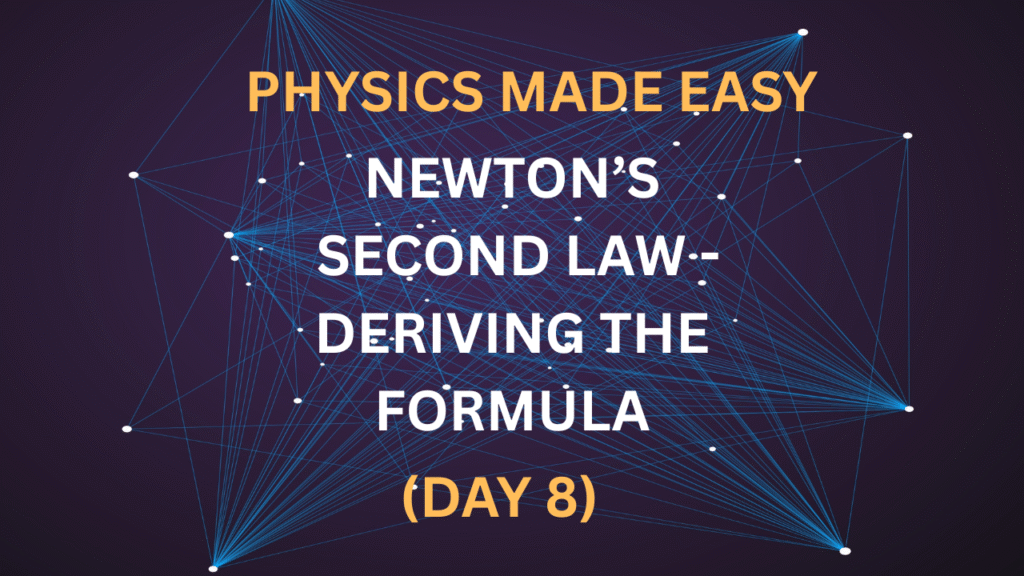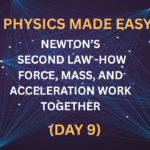🔬 What Does Newton’s Second Law Say?
Newton’s Second Law of Motion tells us:
“The force acting on an object is equal to the mass of the object times its acceleration.”
This law gives us a clear mathematical relationship between force, mass, and acceleration. Every time you see something speed up, slow down, or change its direction, this law is at work.
✍️ Let’s Derive the Formula
To understand the formula, let’s go step-by-step.
Force, Mass, and Acceleration
- Force (F) is what causes an object to move faster, slower, or change its path.
- Mass (m) is the amount of matter an object contains.
- Acceleration (a) is the rate at which the object’s velocity changes — this could be speeding up, slowing down, or changing direction.
Newton observed two important things:
✅ Increasing force increases acceleration.
✅ Increasing mass decreases acceleration.
That’s why mathematically:
- Force is directly proportional to acceleration: F ∝ a
- Force is also directly proportional to mass: F ∝ m
Combining Both
When you put these together:
F ∝ m × a
And to remove the proportionality symbol (∝), we introduce a constant k. In the SI unit system, k = 1, so:
F = m × a
🎯 And there it is — the famous formula of Newton’s Second Law!
📐 Understanding the Units
| Quantity | Symbol | SI Unit |
|---|---|---|
| Force | F | Newton (N) |
| Mass | m | Kilogram (kg) |
| Acceleration | a | meters per second² (m/s²) |
💡 1 Newton is the force needed to accelerate 1 kg of mass by 1 m/s².
🔁 Formula in Use
Let’s put this into practice. Imagine:
- Mass (m) = 2 kg
- Acceleration (a) = 3 m/s²
Using the formula:
F = m × a = 2 × 3 = 6 N
That means you’d need a force of 6 newtons to make a 2 kg object accelerate at 3 m/s².
🧠 Quick Tip
Always remember:
✅ If force increases, acceleration increases — you move faster.
✅ If mass increases, you need more force to get the same acceleration — it’s harder to move heavier objects.
✨ Summary
Newton’s Second Law is a powerful tool for understanding motion. Its simple formula — F = m × a — allows us to predict and control how objects move when we apply force. Whether you’re pushing a cart or launching a rocket into space, this law is at the core of the physics that make it happen.
💡 Ready to Explore More?
Next time you use force to move something — be it pushing a chair, lifting weights, or riding a bicycle — take a moment to appreciate the amazing math behind it. Newton’s laws help us explain motion across every scale, and knowing them can give you a deeper appreciation of the world around you.



